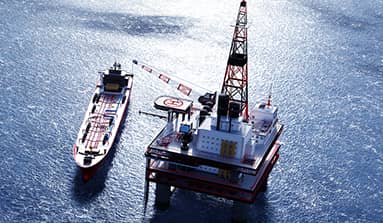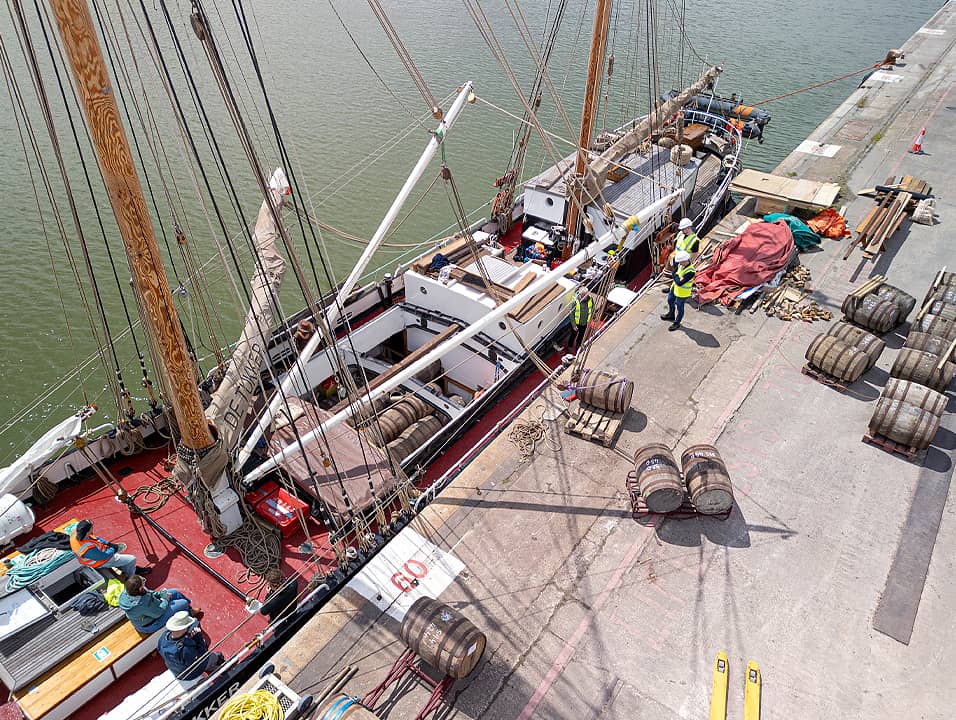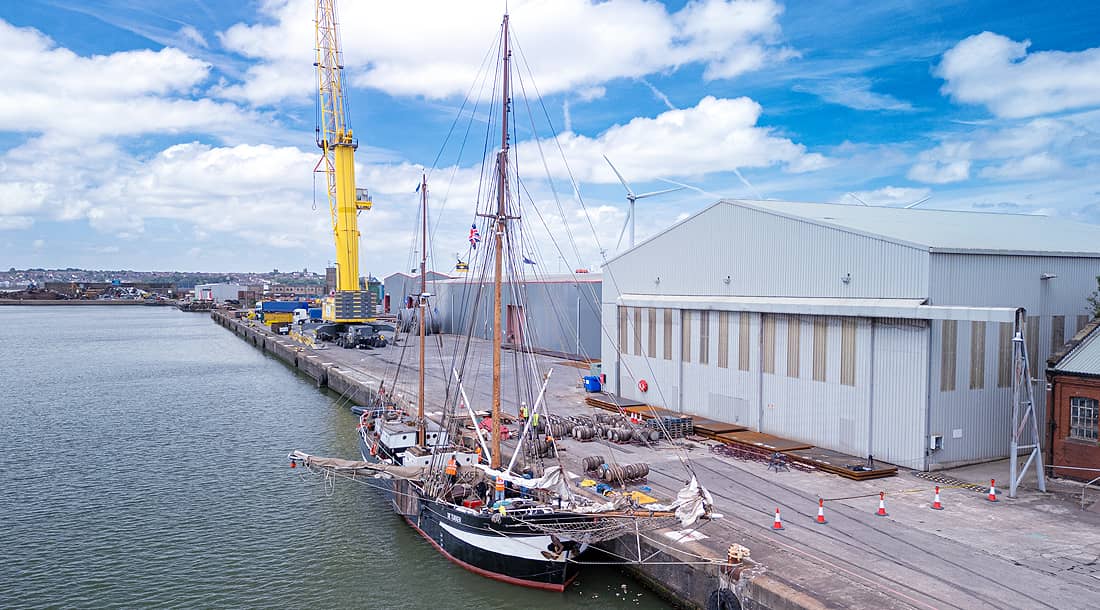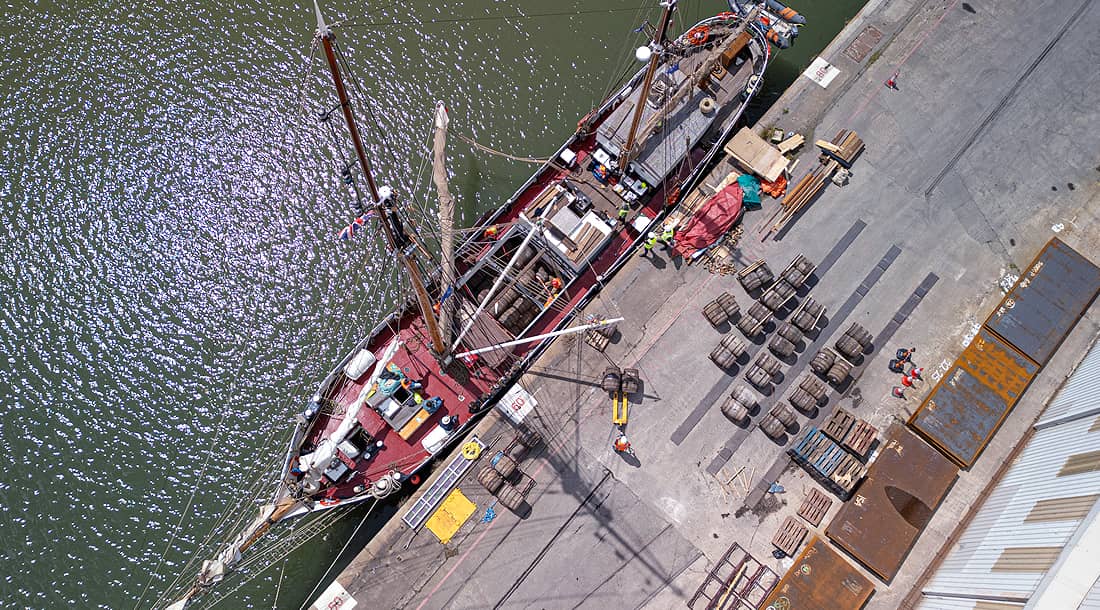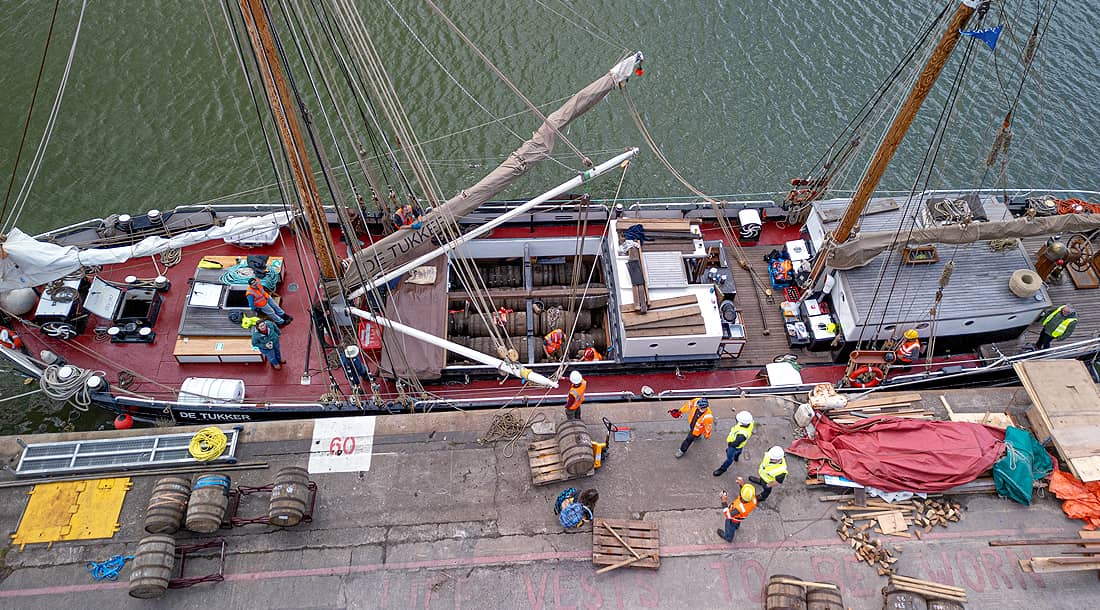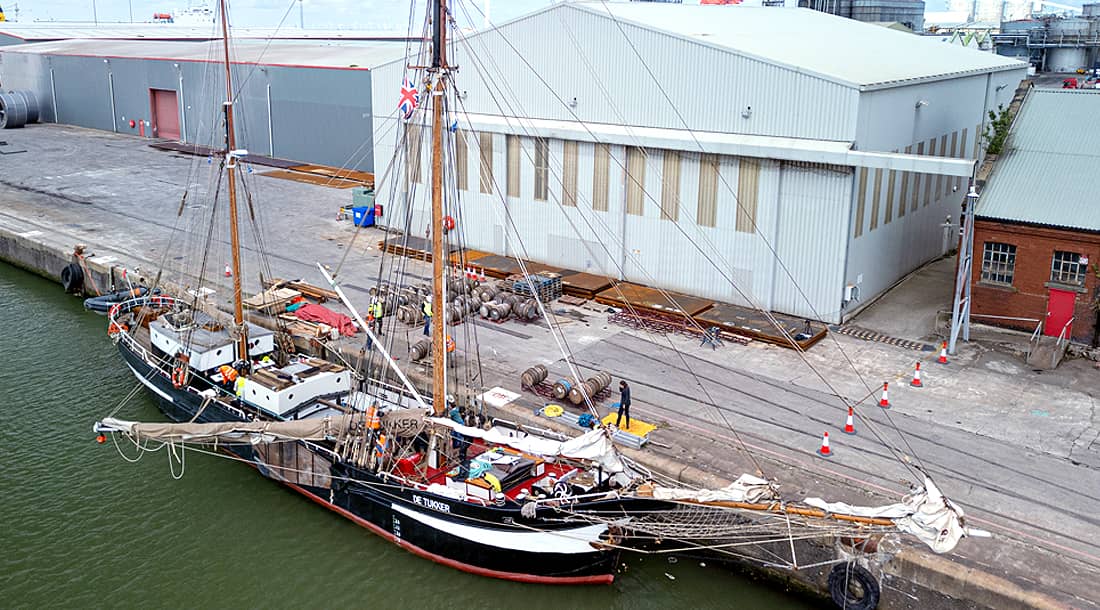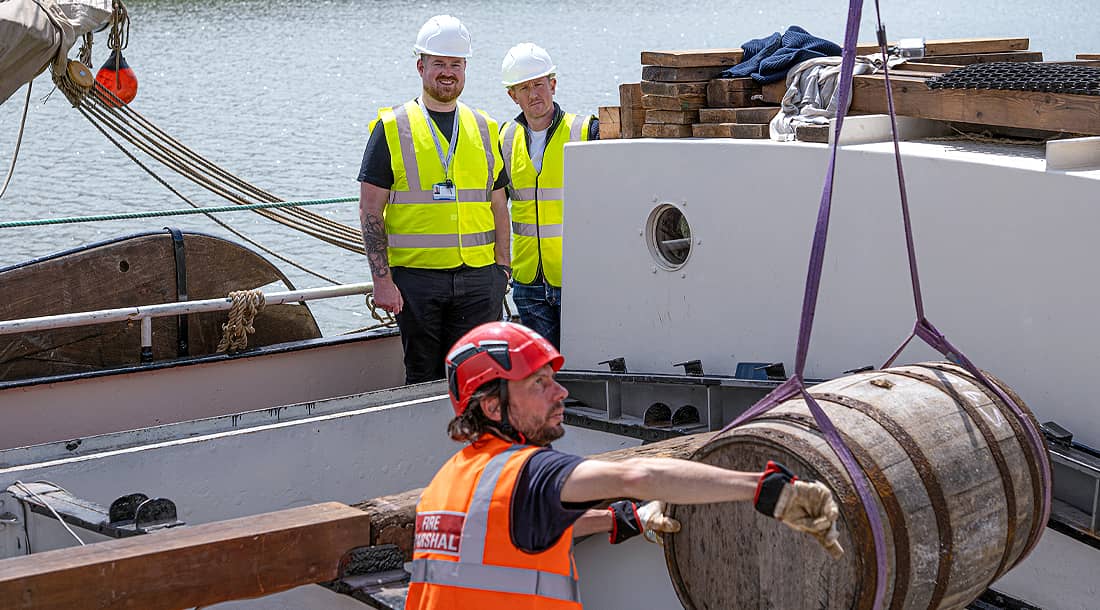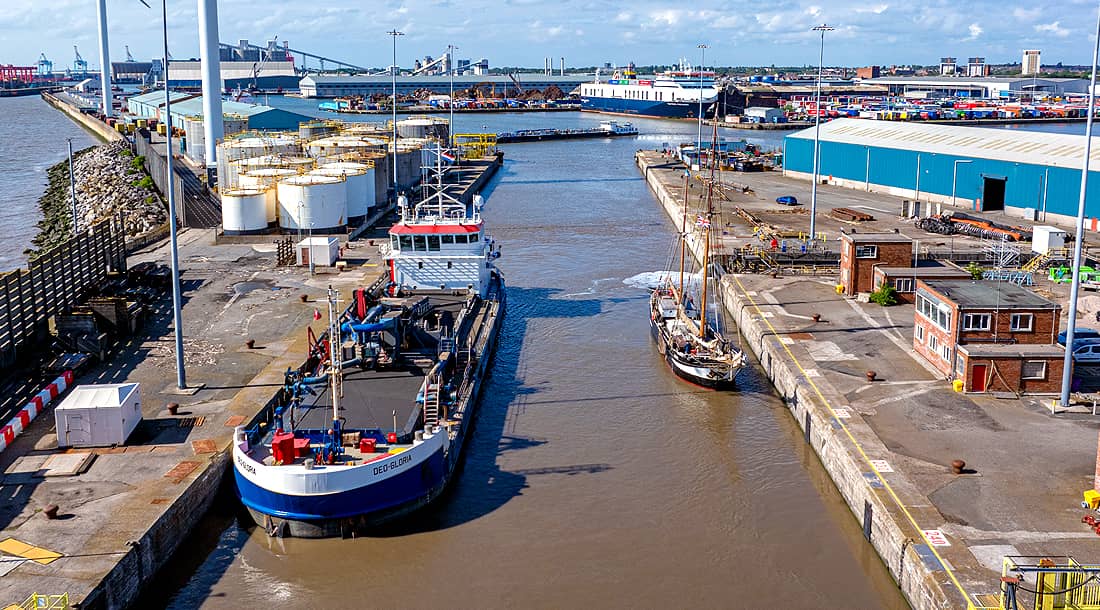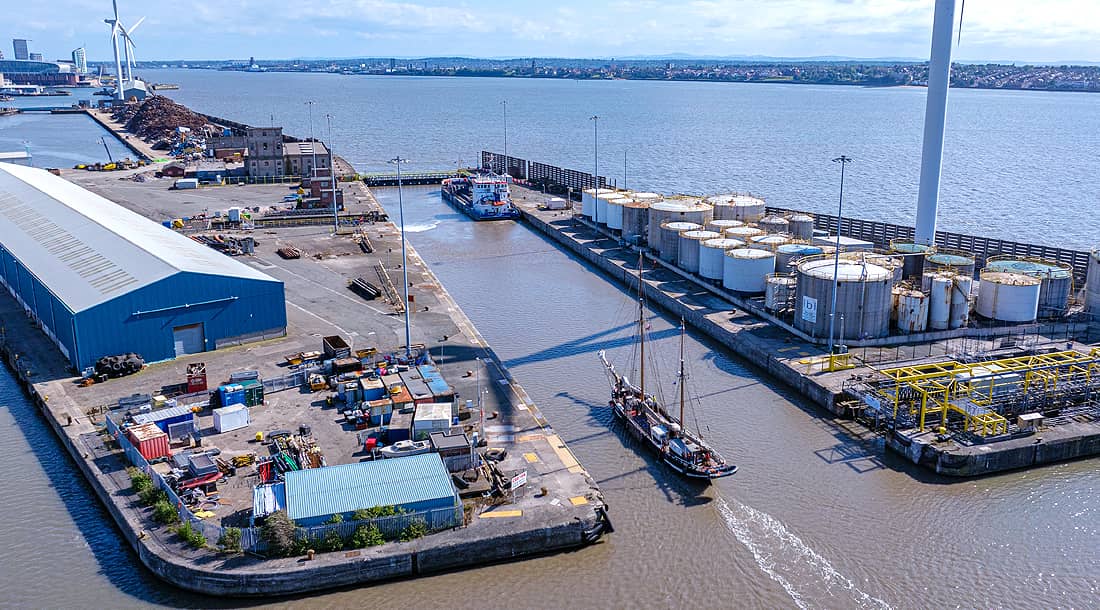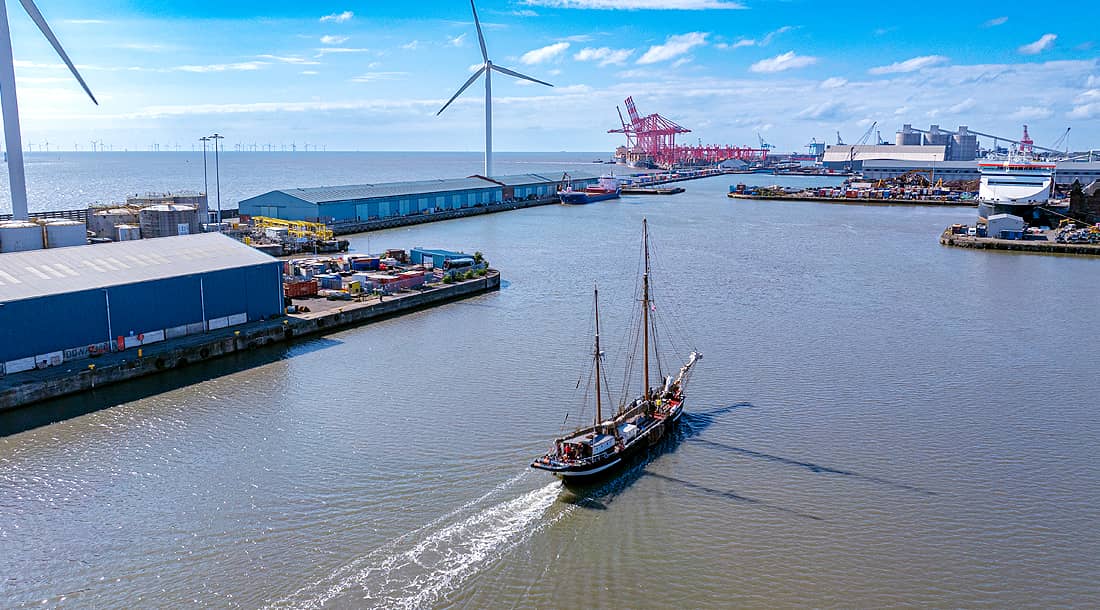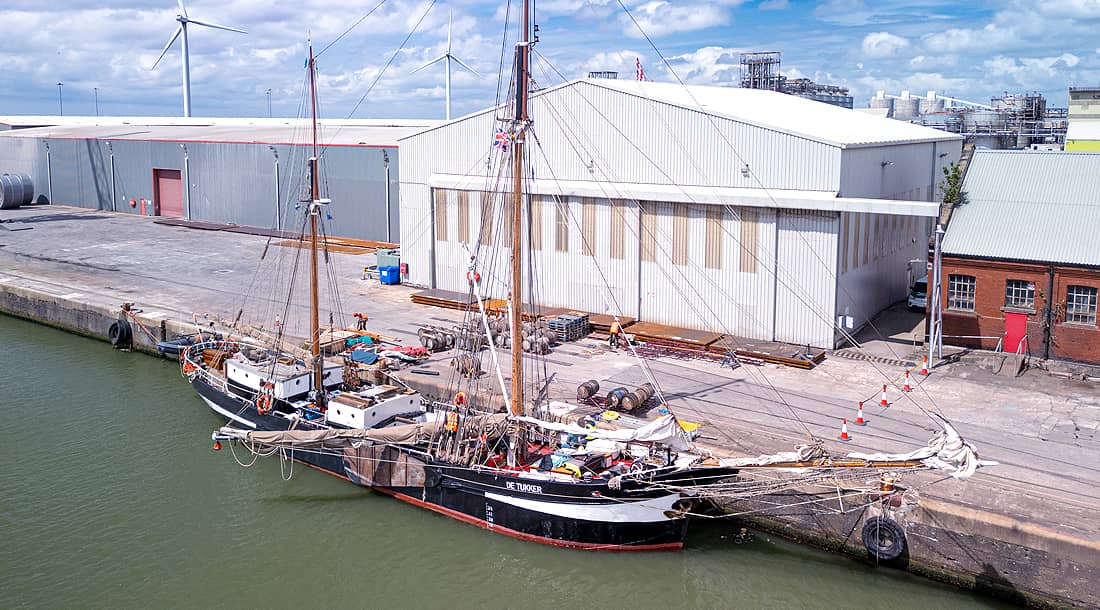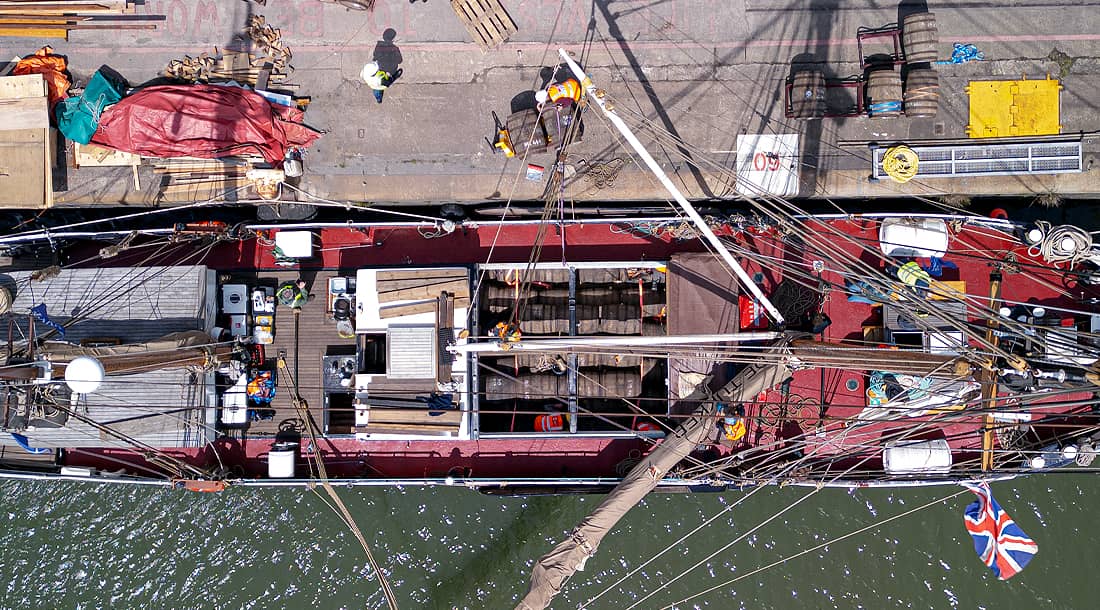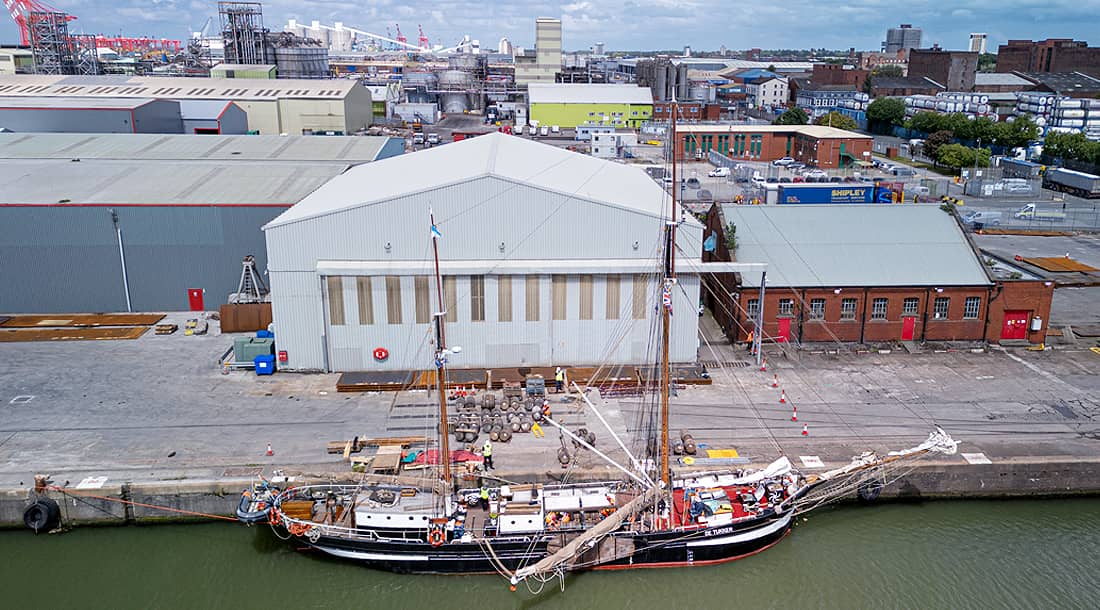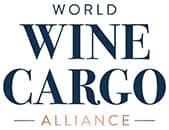The Background
In recent years, industries worldwide have become increasingly conscious of their carbon footprints and the overall impact on the environment. Many companies are exploring innovative ways to reduce emissions and promote sustainability to address these concerns. KC Group Shipping is a pivotal partner to clients’ environmental and sustainable shipping agenda. A long-standing customer from the international spirits sector recently invited us to participate in a groundbreaking green project. The objective was to transport barrels of Caribbean rum using a traditional sailing ship, highlighting a return to the roots of the rum trade and maritime shipping.
Watch the video below of the 112-year-old sailing ship's journey
The Requirements
The customer envisioned transporting 130 barrels of Caribbean rum from Liverpool to Amsterdam using a 112-year-old sailing ship. This project aimed to showcase environmentally friendly shipping methods by utilizing wind-powered transport, thus reducing the carbon footprint. KC Group Shipping's role encompassed finding an appropriate berth at the historic Liverpool docks, coordinating with the ship's crew, managing transport logistics, and ensuring customs clearance. The project's success hinged on blending historical practices with modern regulatory compliance. Liverpool’s Royal Albert Dock which was used until the early 20th century to handle sailing ships and barrelled cargoes and is now a bustling tourism location, unfortunately wasn’t suitable for this project. The vessel could only be handled in a quiet corner of the current commercial docks (Canada Dock), away from the public traffic.
Challenges Faced
The project presented unique challenges, primarily due to the reliance on wind power for navigation across the English Channel and Irish Sea. The unpredictability of wind speeds required constant monitoring and adjustments to berthing dates, which changed daily. Additional complications included accounting for tidal patterns and other maritime considerations less significant for modern, deep-sea container vessels. KC Group Shipping had to meticulously plan and adapt to these variables, ensuring seamless coordination between all parties involved. From a vessel operating stance, there were challenges in obtaining obligatory P&I and insurance.
Results and Observations
Despite the challenges, KC Group Shipping successfully managed the project by integrating traditional and contemporary practices. The loading process was a nod to the past, using ropes, traditional block and tackle lifting gear, and manual labour to handle the barrels. Simultaneously, modern technology and procedures were employed to ensure compliance with current export controls, including the Customs Declaration Service (CDS) and the Excise Movement and Control System (EMCS).
The flexibility and responsiveness of KC Group Shipping, coupled with strong partnerships in Liverpool, ensured that the vessel arrived ahead of schedule, allowing the crew extra time to explore Liverpool before commencing their journey. The project demonstrated the feasibility of combining historical maritime methods with modern logistics and compliance standards, paving the way for future sustainable shipping initiatives.
- de-tukker-gallery-
- de-tukker-gallery-
- de-tukker-gallery-
- de-tukker-gallery-
- de-tukker-gallery-
- de-tukker-gallery-
- de-tukker-gallery-
- de-tukker-gallery-
- de-tukker-gallery-
- de-tukker-gallery-
- de-tukker-gallery-
- de-tukker-gallery-
- de-tukker-gallery-
- de-tukker-gallery-
- de-tukker-gallery-
- de-tukker-gallery-
- de-tukker-gallery-
Historical Context: Shipping Rum by Cargo Ships
Early History
Rum production began in the Caribbean in the 17th century, where sugar plantations flourished. The earliest distillations occurred in the 1620s on these plantations, and the need to transport rum quickly followed. Initially, wooden barrels and sailing ships were used to move rum across oceans. Rum is the distillate of molasses (black treacle) separated from raw cane sugar.
The Golden Age of Piracy
The 17th and 18th centuries also marked the Golden Age of Piracy. Pirates targeted rum shipments, among other valuable goods, as they plied the Caribbean and Atlantic trade routes. Rum was a favoured commodity not only for its value but also for its popularity among sailors and pirates alike. Until 1970, the Royal Navy provided its sailors a daily rum ration, a tradition known as “splicing the mainbrace” and now only occurs by monarch command on special occasions such as the birth of a prince or princess or a Royal Jubilee.
Modern Shipping
As steamships, and later, motorised vessels, replaced sailing ships, the shipping of rum became faster and more reliable. The advent of containerisation in the 20th century revolutionised the shipping industry, allowing for the efficient and secure transport of large quantities of rum worldwide. Through time, carriers and specialist forwarders purchased purpose-built food grade ISO tank container fleets to transport rum consignments. Whisky concentrate would be shipped to certain Caribbean markets such as Colombia and the empty tank containers cleaned and refilled with rum from Trinidad, Venezuela or Jamaica back to the UK and Europe. Despite these advancements, the environmental impact of modern shipping methods has prompted a renewed interest in sustainable practices, as evidenced in this case study.
Conclusion
The collaboration between KC Group Shipping and their customer on the green project to transport rum by sailing ship honoured the historical roots of the rum trade and maritime shipping and demonstrates a commitment to sustainability.
By overcoming significant logistical challenges and seamlessly integrating old and new technologies, the project set a precedent for environmentally conscious shipping solutions. This case study serves as an example of how industries can innovate and adapt to reduce their carbon footprints while maintaining operational efficiency and compliance.


